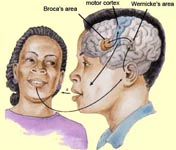Research into brain centre responsible for ‘phantom sounds’ gets underway

Washington, October 6 : Researchers at the University at Buffalo have received a grant of a 2.9 million dollars from the National Institutes of Health to carry out a five-year study in well-trained rats, which may reveal the brain signals responsible for creating the phantom sounds of tinnitus in the ear and lead to potential therapies to quiet the noise.
The research will take place at the Center for Hearing and Deafness, part of the Department of Communicative Disorders and Sciences in the university's College of Arts and Sciences.
Dr. Richard Salvi, the centre’s director and the principal investigator on the project, says that the animal models developed by his team can “tell” whether they are experiencing tinnitus. He has revealed that these models were the result of more than 10 years of research on the condition.
Tinnitus is caused by continued exposure to loud noise by normal aging, and to a much lesser extent, as a side effect of taking certain anti-cancer drugs. It is a major concern in the military, as 30 per cent of Iraq and Afghanistan combat veterans suffer from the condition.
"For many years it was thought that the buzzing or ringing sounds heard by people with tinnitus originated in the ear. But by using positron emission tomography (known as PET scanning) to view the brain activity of people with tinnitus at UB, we've been able to show that these phantom auditory sensations originated somewhere in brain, not in the ear. That changed the whole research approach," Salvi said.
The researchers have so far discovered that when the brain's auditory cortex begins receiving diminished neural signals from the hearing organ cochlea due to injury or age, the auditory cortex "turns up the volume”, increasing weak neural signals from the cochlea. They believe that increasing the volume of these weak signals may be experienced as the buzzing, ringing, or hissing characteristic of tinnitus.
Currently, there is no drug or treatment that can abolish these phantom sounds.
Dr. Salvi has revealed that their new study will run in three phases. In the first phase, he and his colleagues will try to identify that pattern of neural activity in the auditory cortex which is associated with the onset of tinnitus.
He said that in the second phase of the study, his team will assess neural activity throughout the entire brain using a radioactive tracer, fluorodeoxyglucose (FDG), which is taken up preferentially into regions of the brain that are highly active metabolically.
The third phase of the study will involve the use of potential therapeutic drugs to suppress noise-induced tinnitus. (ANI)